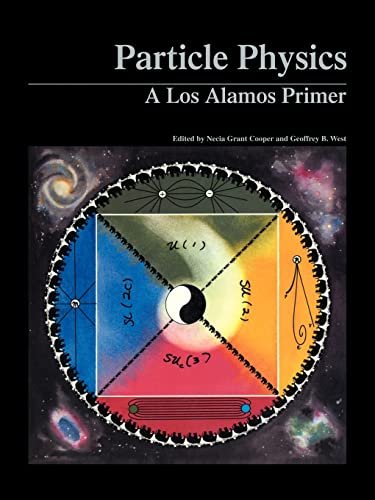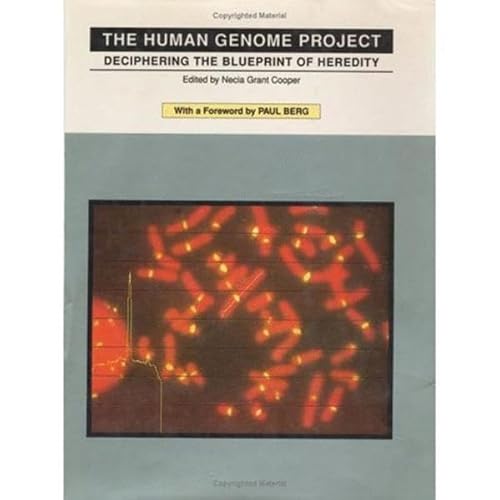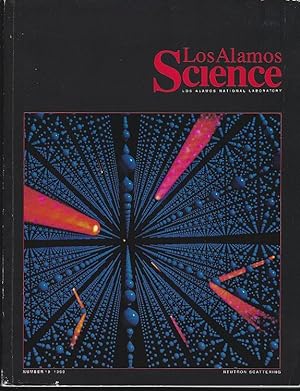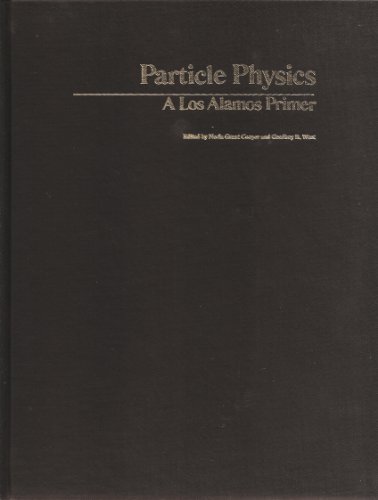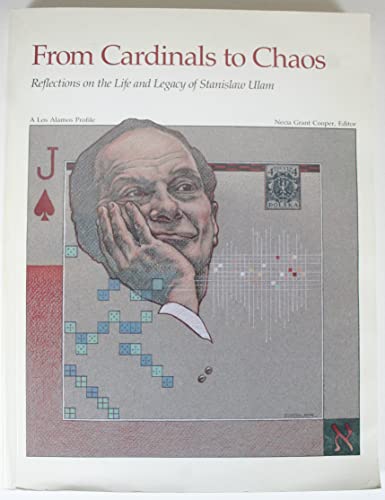cooper necia (65 Ergebnisse)
Produktart
- Alle Produktarten
- Bücher (64)
- Magazine & Zeitschriften (1)
- Comics
- Noten
- Kunst, Grafik & Poster
- Fotografien
- Karten
-
Manuskripte &
Papierantiquitäten
Zustand
Einband
Weitere Eigenschaften
Land des Verkäufers
Verkäuferbewertung
-
Particle Physics: A Los Alamos Primer
Verlag: Cambridge University Press, 2009
ISBN 10: 0521347807ISBN 13: 9780521347808
Anbieter: HPB-Red, Dallas, TX, USA
Buch
Paperback. Zustand: Good. Connecting readers with great books since 1972! Used textbooks may not include companion materials such as access codes, etc. May have some wear or writing/highlighting. We ship orders daily and Customer Service is our top priority!.
Mehr Angebote von anderen Verkäufern bei AbeBooks
Neu ab EUR 29,24
Gebraucht ab EUR 7,45
Mehr entdecken Softcover
-
The Human Genome Project
Verlag: University Science Books, 1994
ISBN 10: 0935702296ISBN 13: 9780935702293
Anbieter: Better World Books: West, Reno, NV, USA
Buch
Zustand: Good. rev. Former library book; may include library markings. Used book that is in clean, average condition without any missing pages.
Mehr Angebote von anderen Verkäufern bei AbeBooks
Gebraucht ab EUR 11,51
-
THE HUMAN GENOME PROJECT (LOS ALAMOS SCIENCE, NUMBER 20, 1992) .
Verlag: Los Alamos National Library,, 1992
Anbieter: Nelson & Nelson, Booksellers, Trenton, SC, USA
Verbandsmitglied: IOBA
Softcover. Zustand: VG-. Zustand des Schutzumschlags: No Dust Jacket. Oversize paperback with light, minor shelfwear; covers and pages clean. Not a former library copy. ;
-
LOS ALAMOS SCIENCE NUMBER 19 1990 NEUTRON SCATTERING Los Alamos National Laboratory
Verlag: Los Alamos National Laboratory, Los Alamos, NM, 1990
Anbieter: Gibson's Books, New Hope, AL, USA
Softcover. Very Good with no dust jacket; Edgewear; B&W and color Illustrations; 205 pages.
-
Los Alamos Science Number 23 Radiation Protection and the Human Radiation Experiments
Verlag: Los Alamos National Laboratory, Los Alamos, NM, 1995
Anbieter: Wm Burgett Bks and Collectibles, San diego, CA, USA
Buch
Paperback. Zustand: Fine. First Edition. CLEAN Fine1995 paper back. Size: 4to - over 9¾" - 12" tall.
-
The Human Genome Project Number 20, 1992
Verlag: Los Alamos National Laboratory, 1992
Anbieter: EKER BOOKS, Bryantown, MD, USA
paperback. Zustand: Fine.
-
Los Alamos Science: Los Alamos Scientific Laboratory Volume 1, Number 1
Verlag: University of California/Los Alamos Scientific Laboratory, Los Alamos, NM, 1980
Anbieter: Xochi's Bookstore & Gallery, Truth or consequences, NM, USA
Magazin / Zeitschrift
Paper Back. Zustand: Very Good. No Jacket. 152pp.; SC blk.w/white-pic.cover; covers rubbed; clean,tight pgs. Scientific Journal. Premier issue, vol.1,No.1, Summer 1980. Feature: Nuclear Safeguards. illus.
-
Los Alamos Science Number 11 Summer/Fall 1984. Particle Physics
Verlag: Los Alamos National Laboratory, 1984
Anbieter: Zubal-Books, Since 1961, Cleveland, OH, USA
Zustand: Very Good. *Price HAS BEEN REDUCED by 10% until Monday, April 29 (sale item)* 187 pp., softcover, edges rubbed, else very good. - If you are reading this, this item is actually (physically) in our stock and ready for shipment once ordered. We are not bookjackers. Buyer is responsible for any additional duties, taxes, or fees required by recipient's country.
-
Los Alamos Science, Volume 3, Number 3, Fall 1982
Verlag: Los Alamos National Laboratory, [Los Alamos, NM], 1982
Anbieter: Ground Zero Books, Ltd., Silver Spring, MD, USA
Wraps. Zustand: good. Anita Flores, Monica Fink, and Kathi Goeffrion Pa (illustrator). 28 cm, 76 pages. Wraps. Illustrations (some color). Figures. Some wear and soiling to covers, lower corner of entire document bent. Los Alamos Science is a science journal distributed world-wide that presents the most exciting research at LANL. Articles are designed to communicate technical insights to a broad audience. Issues are published once or twice a year and often emphasize single themes. Recent themes include radiation and the human radiation experiments, the human genome, high-performance computing, and collaborations between Russian and American nuclear institutes. In this issue Hans Bethe's memo, republished here, was aimed at refuting the notion the J. Robert Oppenheimer had delayed the development of thermonuclear weapons. Other articles focus on topics in nonlinear science and bioscience. The Laboratory was established in 1943 as site Y of the Manhattan Project for a single purpose: to design and build an atomic bomb. It took just 20 months. On July 16, 1945, the world's first atomic bomb was detonated 200 miles south of Los Alamos at Trinity Site on the Alamogordo bombing range. Under the scientific leadership of J. Robert Oppenheimer and the military direction of General Leslie R. Groves, scientists at the Laboratory had successfully weaponized the atom. President Harry S. Truman chose to employ atomic bombs in an effort to end WWII. A rich variety of research programs directly and indirectly support the Laboratory's basic mission: maintaining the safety, security, and reliability of the nation's nuclear deterrent without the need to return to underground testing. With a national security focus, the Laboratory also works on nuclear nonproliferation and border security, energy and infrastructure security, and countermeasures to nuclear and biological terrorist threats.
-
Los Alamos Science, Volume 2, Number 2, Summer/Fall 1981
Verlag: Los Alamos National Laboratory, [Los Alamos, NM], 1981
Anbieter: Ground Zero Books, Ltd., Silver Spring, MD, USA
Erstausgabe
Trade paperback. Zustand: Very good. 28 cm, 159, [1] pages. Wraps. Illustrations (some color). Figures. Cover has slight wear and soiling. This issues focuses on Reactor Safety. Los Alamos Science, the flagship publication of Los Alamos National Laboratory from 1980 through 2005, was distributed to the international scientific community, academic libraries, and US government policymakers. It presented a coherent picture of some of the most exciting scientific initiatives of the Laboratory and served as a forum for LANL scientists to display the breadth and depth of their research and its significance to national security. Many volumes are devoted to areas in which LANL was or still is a leader. These range from frontiers in the biosciences to those in the physical sciences, and predictive science. Some themes reflect LANL's focus on fundamental physics while others convey LANL's role in national security. A hallmark of Los Alamos Science was the development of articles that tackle difficult concepts. These presentations were intended to foster interdisciplinary research, enabling scientists in one field to become familiar with the ideas and techniques of another field. Another special feature of the Los Alamos Science series are the volumes celebrating Laboratory anniversaries (40th, 50th, 60th). They provide snapshots of the entire Laboratory that illustrate the evolution of the nuclear weapons mission and other programs. The Laboratory was established in 1943 as site Y of the Manhattan Project for a single purpose: to design and build an atomic bomb. It took just 20 months. On July 16, 1945, the world's first atomic bomb was detonated 200 miles south of Los Alamos at Trinity Site on the Alamogordo bombing range. Under the scientific leadership of J. Robert Oppenheimer and the military direction of General Leslie R. Groves, scientists at the Laboratory had successfully weaponized the atom. Hitler was defeated in Europe, but the Japanese Empire continued to wage an aggressive Pacific war. So President Harry S. Truman chose to employ atomic bombs in an effort to end WWII. Little Boy, a uranium gun-type weapon, was used against Hiroshima; Fat Man, an implosion plutonium bomb, was dropped on Nagasaki. On August 14, the war officially ended. An invasion of the Japanese home islands proved unnecessary, thus sparing thousands of American and Japanese lives. The Los Alamos of today has a heightened focus on worker safety and security awareness, with the ever-present core values of intellectual freedom, scientific excellence, and national service. Outstanding science underpins the Laboratory's past and its future. A rich variety of research programs directly and indirectly support the Laboratory's basic mission: maintaining the safety, security, and reliability of the nation's nuclear deterrent without the need to return to underground testing. With a national security focus, the Laboratory also works on nuclear nonproliferation and border security, energy and infrastructure security, and countermeasures to nuclear and biological terrorist threats. Presumed First Edition, First printing thus.
-
Los Alamos Science, Volume 3, Number 1, Winter/Spring 1982
Verlag: Los Alamos National Laboratory, [Los Alamos, NM], 1982
Anbieter: Ground Zero Books, Ltd., Silver Spring, MD, USA
Wraps. Zustand: good. Anita Flores, Monica Fink, (illustrator). 28 cm, 95, [1] pages, plus covers. Wraps. Illustrations (some color). Figures. Some wear and soiling to covers. Mailing information on back cover. Los Alamos Science is a science journal distributed world-wide that presents the most exciting research at LANL. Articles are designed to communicate technical insights to a broad audience. Issues are published once or twice a year and often emphasize single themes. Recent themes include radiation and the human radiation experiments, the human genome, high-performance computing, and collaborations between Russian and American nuclear institutes. In this issue are articles on Laser Separation of Isotopes, Uranium Enrichment, Infrared Spectroscopy, Tunable Lasers, Multiple-Photon Excitation, and Bernd Matthias. The Laboratory was established in 1943 as site Y of the Manhattan Project for a single purpose: to design and build an atomic bomb. It took just 20 months. On July 16, 1945, the world's first atomic bomb was detonated 200 miles south of Los Alamos at Trinity Site on the Alamogordo bombing range. Under the scientific leadership of J. Robert Oppenheimer and the military direction of General Leslie R. Groves, scientists at the Laboratory had successfully weaponized the atom. President Harry S. Truman chose to employ atomic bombs in an effort to end WWII. A rich variety of research programs directly and indirectly support the Laboratory's basic mission: maintaining the safety, security, and reliability of the nation's nuclear deterrent without the need to return to underground testing. With a national security focus, the Laboratory also works on nuclear nonproliferation and border security, energy and infrastructure security, and countermeasures to nuclear and biological terrorist threats.
-
Particle Physics : A Los Alamos Primer
Verlag: Cambridge University Press, 1988
ISBN 10: 0521345421ISBN 13: 9780521345422
Anbieter: Better World Books, Mishawaka, IN, USA
Buch
Zustand: Good. Former library book; may include library markings. Used book that is in clean, average condition without any missing pages.
Mehr Angebote von anderen Verkäufern bei AbeBooks
Neu ab EUR 244,30
Gebraucht ab EUR 49,20
Mehr entdecken Hardcover Erstausgabe
-
From Cardinals to Chaos: Reflections on the Life and Legacy of Stanislaw Ulam.
Verlag: Cambridge, etc.: Cambridge University Press, 1989., 1989
ISBN 10: 0521367344ISBN 13: 9780521367349
Anbieter: Ted Kottler, Bookseller, Redondo Beach, CA, USA
Buch Erstausgabe
Soft cover. Zustand: Near Fine. No Jacket. 1st Edition. First Edition in bookform, paperback (published simultaneously in cloth). 320 pp; illus. Original wrappers, 4to. Very Good+. First published as Los Alamos Science Special Issue (1987).
-
Los Alamos Science: Russian-American Collaborations to Reduce the Nuclear Danger: Number 24, 1996
Verlag: Los Alamos National Laboratory, Los Alamos, NM, 1996
Anbieter: Ground Zero Books, Ltd., Silver Spring, MD, USA
Wraps. Zustand: Very good. [ii], 93, [1] p. 28cm. Illustrations (many in color). Chronology of Lab-to-Lab Program. From Wikipedia: "Los Alamos National Laboratory (or LANL; previously known at various times as Project Y, Los Alamos Laboratory, and Los Alamos Scientific Laboratory) is one of two laboratories in the United States where classified work towards the design of nuclear weapons is undertaken. The other, since 1952, is Lawrence Livermore National Laboratory. LANL is a United States Department of Energy (DOE) national laboratory, managed and operated by Los Alamos National Security (LANS), located in Los Alamos, New Mexico. The laboratory is one of the largest science and technology institutions in the world. It conducts multidisciplinary research in fields such as national security, space exploration, renewable energy, medicine, nanotechnology, and supercomputing. LANL is the largest institution and the largest employer in northern New Mexico, with approximately 9, 000 direct employees and around 650 contractor personnel. Additionally, there are roughly 120 DOE employees stationed at the laboratory to provide federal oversight of LANL's work and operations. Approximately one-third of the laboratory's technical staff members are physicists, one quarter are engineers, one-sixth are chemists and materials scientists, and the remainder work in mathematics and computational science, biology, geoscience, and other disciplines. Professional scientists and students also come to Los Alamos as visitors to participate in scientific projects. The staff collaborates with universities and industry in both basic and applied research to develop resources for the future. The annual budget is approximately US$2.2 billion.".
-
Los Alamos Science Number 11 Summer/Fall 1984
Verlag: Los Alamos National Laboratory, 1984
Anbieter: A Squared Books (Don Dewhirst), South Lyon, MI, USA
Buch
Paperback. Zustand: Good. 1984; Los Alamos; black illustrated glossy paper covers with gray titles; covers contain rubbing and wear; interior clean and unmarked; 4to - over 9 3/4" to 12" tall; 187 pages; Additional shipping charges may need to be requested due to size or weight of book.
-
Los Alamos Science, No. 28: Celebrating 60 Years. Inspiration from Our Past; The Laboratory Today; Building the Future
Verlag: Los Alamos National Laboratory, Los Alamos, NM, 2003
Anbieter: Ground Zero Books, Ltd., Silver Spring, MD, USA
Erstausgabe
Wraps. Zustand: very good. Presumed First Edition, First printing. 28 cm, 249, wraps, illus. (some in color), map, figures, charts. This commemorates the laboratory's 60 years supporting national security and national needs Los Alamos Science, the flagship publication of Los Alamos National Laboratory from 1980 through 2005, was distributed to the international scientific community, academic libraries, and US government policymakers. It presented a coherent picture of some of the most exciting scientific initiatives of the Laboratory and served as a forum for LANL scientists to display the breadth and depth of their research and its significance to national security. Many volumes are devoted to areas in which LANL was or still is a leader. These range from frontiers in the biosciences - Human Genome Project, AIDS research, and radiation protection - to those in the physical sciences - neutrons as probes of nanomaterials, quantum computing and information, and predictive science. Some themes reflect LANL's focus on fundamental physics - nonlinear studies and the legacy of Stan Ulam, neutrino physics and astrophysics - others convey LANL's role in national security - Russian-American collaborations and challenges in plutonium science. A hallmark of Los Alamos Science was the development of pedagogical articles that tackle difficult concepts. These presentations were intended to foster interdisciplinary research, enabling scientists in one field to become familiar with the ideas and techniques of another field. Another special feature of the Los Alamos Science series are the volumes celebrating Laboratory anniversaries (40th, 50th, 60th). They provide snapshots of the entire Laboratory that illustrate the evolution of the nuclear weapons mission and other programs. Finally, the interviews, roundtable discussions, reports on conferences, and personal essays help to capture the personality and the spirit of innovation that permeate this historic site.
-
Los Alamos Science, No. 28: Celebrating 60 Years. Inspiration from Our Past; The Laboratory Today; Building the Future
Verlag: Los Alamos National Laboratory, Los Alamos, NM, 2003
Anbieter: Ground Zero Books, Ltd., Silver Spring, MD, USA
Erstausgabe
Wraps. Zustand: New. Presumed First Edition, First printing. 28 cm, 249, CD, illus. (some in color), map, figures, charts. CD is in its original shrink wrap. This commemorates the laboratory's 60 years supporting national security and national needs Los Alamos Science, the flagship publication of Los Alamos National Laboratory from 1980 through 2005, was distributed to the international scientific community, academic libraries, and US government policymakers. It presented a coherent picture of some of the most exciting scientific initiatives of the Laboratory and served as a forum for LANL scientists to display the breadth and depth of their research and its significance to national security. Many volumes are devoted to areas in which LANL was or still is a leader. These range from frontiers in the biosciences - Human Genome Project, AIDS research, and radiation protection - to those in the physical sciences - neutrons as probes of nanomaterials, quantum computing and information, and predictive science. Some themes reflect LANL's focus on fundamental physics - nonlinear studies and the legacy of Stan Ulam, neutrino physics and astrophysics - others convey LANL's role in national security - Russian-American collaborations and challenges in plutonium science. A hallmark of Los Alamos Science was the development of pedagogical articles that tackle difficult concepts. These presentations were intended to foster interdisciplinary research, enabling scientists in one field to become familiar with the ideas and techniques of another field. Another special feature of the Los Alamos Science series are the volumes celebrating Laboratory anniversaries (40th, 50th, 60th). They provide snapshots of the entire Laboratory that illustrate the evolution of the nuclear weapons mission and other programs. Finally, the interviews, roundtable discussions, reports on conferences, and personal essays help to capture the personality and the spirit of innovation that permeate this historic site.
-
Los Alamos Science, No. 16; Unsolved Problems in the Science of Life LA-UR-88-1000
Verlag: Los Alamos National Laboratory, Los Alamos, NM, 1988
Anbieter: Ground Zero Books, Ltd., Silver Spring, MD, USA
Erstausgabe
Wraps. Zustand: Good. Presumed First Edition, First printing. [2], 80, [2] pages plus covers. Illustrations (some in color). Further Reading. Cover has wear and soiling, especially at the edges. Mailing information on back cover. Los Alamos Science, the flagship publication of Los Alamos National Laboratory from 1980 through 2005, was distributed to the international scientific community, academic libraries, and US government policymakers. It presented a coherent picture of some of the most exciting scientific initiatives of the Laboratory and served as a forum for LANL scientists to display the breadth and depth of their research and its significance to national security. Many volumes are devoted to areas in which LANL was or still is a leader. These range from frontiers in the biosciences - Human Genome Project, AIDS research, and radiation protection - to those in the physical sciences - neutrons as probes of nanomaterials, quantum computing and information, and predictive science. Some themes reflect LANL's focus on fundamental physics - nonlinear studies and the legacy of Stan Ulam, neutrino physics and astrophysics - others convey LANL's role in national security - Russian-American collaborations and challenges in plutonium science. A hallmark of Los Alamos Science was the development of pedagogical articles that tackle difficult concepts. These presentations were intended to foster interdisciplinary research, enabling scientists in one field to become familiar with the ideas and techniques of another field. Another special feature of the Los Alamos Science series are the volumes celebrating Laboratory anniversaries (40th, 50th, 60th). They provide snapshots of the entire Laboratory that illustrate the evolution of the nuclear weapons mission and other programs. Finally, the interviews, roundtable discussions, reports on conferences, and personal essays help to capture the personality and the spirit of innovation that permeate this historic site.
-
Los Alamos Science:Number 22; LAUR-94-2660
Verlag: Los Alamos National Laboratory, Los Alamos, 1994
Anbieter: Ground Zero Books, Ltd., Silver Spring, MD, USA
Erstausgabe
Wraps. Zustand: Good. [4], 165, [1] pages. Illustrations (many in color). Further Reading. The cover has some wear and soiling. Front corner near fore-edge has some curving. LANL has been at the forefront of scientific computing since before the invention of electronic computers. For several decades it collaborated with industry on the development of large-scale computers and in the early 1990's helped initiate the shift to massively parallel computing. LANL also pioneered the development of powerful algorithms for computations and simulations in the physical sciences. Beginning with a tutorial explaining how computers work, this volume covers some of LANL's best known software contributions, including a Monte Carlo code for particle transport, molecular dynamics software for materials science, and advanced tree codes for simulating the evolution of the universe. Finally, Paul Ginsparg, the creator of xxxdotlanldotgov, discusses the motivation for the first electronic research archive. Contents include Windows on Computing: New Initiatives at Los Alamos; How Computers Work: An Introduction to Serial, Vector, and Parallel Computers; A Monte Carlo Code for Particle Transport; Experimental Cosmology and the Puzzle of Large-Scale Structure; Concept Extraction - A Data Mining Technique; and xxx[dot]lanl[dot]gov --First Steps Toward Electronic Research Communication. Authors include Charles Slocomb and Paul Ginsparg. Los Alamos National Laboratory (often shortened as Los Alamos and LANL) is one of the sixteen research and development laboratories of the United States Department of Energy (DOE), located a short distance northwest of Santa Fe, New Mexico, in the American southwest. Best known for its central role in helping develop the first atomic bomb, LANL is one of the world's largest and most advanced scientific institutions. Los Alamos was established in 1943 as Project Y, a top-secret site for designing nuclear weapons under the Manhattan Project during World War II. Chosen for its remote yet relatively accessible location, it served as the main hub for conducting and coordinating nuclear research, bringing together some of the world's most famous scientists, among them numerous Nobel Prize winners. After the war ended in 1945, Project Y's existence was made public, and it became known universally as Los Alamos. Today, Los Alamos conducts multidisciplinary research in fields such as national security, space exploration, nuclear fusion, renewable energy, medicine, nanotechnology, and supercomputing.Magazines and PeriodicalsMagazines and Periodicals. Presumed First Edition, First printing thus--Issue on High-Performance Computing.
-
Los Alamos Science: Number 21; LA-UR-93-1350
Verlag: Los Alamos National Laboratory, Los Alamos, NM, 1993
Anbieter: Ground Zero Books, Ltd., Silver Spring, MD, USA
Erstausgabe
Wraps. Zustand: Good. John Flower (photographer) and Henry Ortega (photo (illustrator). [6], 237, [1] pages. Illustrations (some in color). Further Reading. The cover is worn and soiled, and there is come curving at the bottom fore-edge corner. Includes sections on Perspectives on the Laboratory, The Stewardship of Nuclear Weapons, Science and Innovation at Los Alamos, and Science Policy: Past and Future. Among the contributors are Harold Agnew, Hans Bethe, Edward Teller, John Immele, Stephen Younger, Susan Seestrom, Robert Seidel and Siegfried Hecker! Los Alamos National Laboratory (often shortened as Los Alamos and LANL) is one of the sixteen research and development laboratories of the United States Department of Energy (DOE), located a short distance northwest of Santa Fe, New Mexico, in the American southwest. Best known for its central role in helping develop the first atomic bomb, LANL is one of the world's largest and most advanced scientific institutions. Los Alamos was established in 1943 as Project Y, a top-secret site for designing nuclear weapons under the Manhattan Project during World War II. Chosen for its remote yet relatively accessible location, it served as the main hub for conducting and coordinating nuclear research, bringing together some of the world's most famous scientists, among them numerous Nobel Prize winners. After the war ended in 1945, Project Y's existence was made public, and it became known universally as Los Alamos. Today, Los Alamos conducts multidisciplinary research in fields such as national security, space exploration, nuclear fusion, renewable energy,[10] medicine, nanotechnology, and supercomputing. In 1993, LANL's 50th anniversary, the Cold War was over, and the Laboratory was in the midst of changing its identity. This volume captures the mood of the times through a candid roundtable among LANL scientists and former Director Harold Agnew. Hans Bethe and Edward Teller offer separate visions of the Laboratory's future, and feature stories examine the new "stewardship" of the nuclear weapons stockpile in the absence of nuclear testing, the threat of nuclear proliferation, and the new peacetime collaborations between former rivals in Russian and American nuclear weapons laboratories. Ten short articles show the breadth of research at LANL ranging from studies of nature's fundamental forces to superconducting wires for efficient delivery of electric power. This volume illustrates the evolving role of national laboratories in national security, energy security, and big science. The Laboratory's 50th Anniversary issue--Presumed First Edition, First printing thus.
-
Los Alamos Science: Number 15, Special Issue; LA-UR-87-3600
Verlag: Los Alamos National Laboratory, Los Alamos, 1987
Anbieter: Ground Zero Books, Ltd., Silver Spring, MD, USA
Erstausgabe
Wraps. Zustand: Fair. John Flower (Photography) (illustrator). The format is approximately 8.5 inches by 11 inches. 318, [2] pages. Illustrations (some in color). The cover is worn and soiled. There is some curving at the bottom corner. There is a small edge tear at the back. Part I Stan Ulam--The Man, His Life, His Style. Part II The Ulam Legacy--Interdisciplinary Approaches. Part III The Ulam Touch--Unpublished Items. This also contains information on The Publications of Stanislaw M. Ulam. Among the contributors to this special issue were Carson Mark, Nik Metropolis, and Gian-Carlos Rota. Los Alamos Science was the Los Alamos National Laboratory's flagship publication in the years 1980 to 2005. Its main purpose was to present the laboratory's research and its significance to national security to the scientific community, and US government policymakers. Special issues appeared on subjects such as particle physics, Stanislaw Ulam, and the Human Genome Project. "Pedagogical articles" were intended to explain difficult concepts in one field to scientists and students in other fields. It presented a coherent picture of some of the most exciting scientific initiatives of the Laboratory and served as a forum for LANL scientists to display the breadth and depth of their research and its significance to national security. Many volumes are devoted to areas in which LANL was or still is a leader. These range from frontiers in the biosciences - Human Genome Project, AIDS research, and radiation protection - to those in the physical sciences - neutrons as probes of nanomaterials, quantum computing and information, and predictive science. Stanis aw Marcin Ulam (13 April 1909 - 13 May 1984) was a Polish-American mathematician, nuclear physicist and computer scientist. He participated in the Manhattan Project, originated the Teller-Ulam design of thermonuclear weapons, discovered the concept of the cellular automaton, invented the Monte Carlo method of computation, and suggested nuclear pulse propulsion. In pure and applied mathematics, he proved some theorems and proposed several conjectures. Born into a wealthy Polish Jewish family in Lemberg, Austria-Hungary; Ulam studied mathematics at the Lwów Polytechnic Institute, where he earned his Ph.D. in 1933 under the supervision of Kazimierz Kuratowski and W odzimierz Sto ek. In 1935, John von Neumann, whom Ulam had met in Warsaw, invited him to come to the Institute for Advanced Study in Princeton, New Jersey, for a few months. From 1936 to 1939, he spent summers in Poland and academic years at Harvard University in Cambridge, Massachusetts, where he worked to establish important results regarding ergodic theory. On 20 August 1939, he sailed for the United States for the last time with his 17-year-old brother Adam Ulam. He became an assistant professor at the University of Wisconsin-Madison in 1940, and a United States citizen in 1941. In October 1943, he received an invitation from Hans Bethe to join the Manhattan Project at the secret Los Alamos Laboratory in New Mexico. There, he worked on the hydrodynamic calculations to predict the behavior of the explosive lenses that were needed by an implosion-type weapon. He was assigned to Edward Teller's group, where he worked on Teller's "Super" bomb for Teller and Enrico Fermi. After the war he left to become an associate professor at the University of Southern California, but returned to Los Alamos in 1946 to work on thermonuclear weapons. With the aid of a cadre of female "computers" he found that Teller's "Super" design was unworkable. In January 1951, Ulam and Teller came up with the Teller-Ulam design, which became the basis for all thermonuclear weapons. Ulam considered the problem of nuclear propulsion of rockets, which was pursued by Project Rover, and proposed, as an alternative to Rover's nuclear thermal rocket, to harness small nuclear explosions for propulsion, which became Project Orion. With Fermi, John Pasta, and Mary Tsingou, Ulam studied the Fermi-Pasta-Ulam-Tsingou problem, which became the inspiration for the field of nonlinear science. He is probably best known for realizing that electronic computers made it practical to apply statistical methods to functions without known solutions, and as computers have developed, the Monte Carlo method has become a common and standard approach to many problems. Presumed First Edition, First printing thus: Special Issue Stanislaw Ulam 1909-1984.


